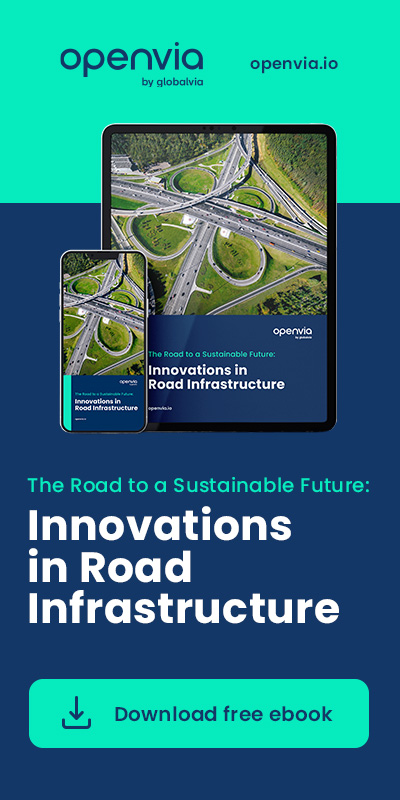Road maintenance is a crucial activity for ensuring driver safety and prolonging the life of road infrastructure.
In a world where road transport remains a priority among all the mobility options available for many people, the quality and condition of roads play a key role in the efficiency and safety of vehicle traffic.
Deteriorated roads not only represent a danger to drivers, but also affect the economy and the environment through higher transport costs and increased fuel consumption.
In this article, we will explore the negative effects of declining roads’ quality and the technological innovations that are revolutionizing road maintenance to make them safer and more efficient.
Negative effects of road deterioration
Beyond the obvious effects, there are negative effects that affect road users, the economy and the environment. The following are some of the direct consequences of a deteriorated road:
Increased risk of traffic accidents
Roads in poor condition significantly increase the risk of road accidents. Potholes, cracks and uneven pavements can cause damage to vehicles and make it difficult to control them, especially at high speeds. Loss of attention combined with the appearance of an obstacle due to bad road conditions can lead to dangerous maneuvers and even accidents.
Increased transport costs
Poor road conditions also increase transport costs. Vehicles traveling on deteriorated roads suffer more wear and tear, which translates into higher maintenance costs. In addition, journey times are lengthened due to the need to reduce speed to avoid damage, which directly affects the efficiency of freight and passenger transport.
Higher fuel consumption
Uneven road surfaces force vehicles to use more fuel. The need for constant braking and acceleration, as well as the extra effort required to overcome potholes and cracks, increase fuel consumption. This not only means higher economic costs for drivers, but also contributes to an increase in greenhouse gas emissions, with a direct negative impact on the environment.
There are studies that report a direct correlation between a poor IRI (International Roughness Index) and an increase in CO2 emissions.
A clear example is found in the NCHRP Report 720 of the Transportation Research Board (T
RB). This document establishes an 8% increase in greenhouse gas emissions from trucks driving on pavements with poor or very poor evenness. In the case of passenger cars, this figure rises to 13%
Technologies developed for road maintenance
In response to the challenges of road maintenance, a number of innovative technologies have been developed to improve road safety and efficiency. These technologies not only address the problem of deterioration, but also promote a more sustainable use of resources.
Sensors and real-time monitoring
One of the technologies that is demonstrating the greatest impact is the use of sensors for real-time monitoring of road conditions. These sensors can detect surface changes, such as the formation of cracks or potholes, and send alerts to maintenance authorities. The speed and automation of detection enables a quick and efficient response to repair damage before it becomes a major problem. Costs are minimized and in parallel the good condition of the road is optimized.
Advanced construction materials
The development of new construction materials has also been key to innovation in road maintenance. More durable asphalt mixes that are resistant to extreme weather conditions are now being used. In addition, some materials have self-healing properties, they can self-manage when small cracks occur, significantly extending the service life of the road.
Drones and robotics
The use of drones and robots for road inspection and repair is gaining market penetration. Drones can fly over large areas and capture detailed images of the road surface, quickly identifying areas in need of repair. Robots, meanwhile, can perform maintenance tasks with precision and efficiency, reducing the need for human intervention and improving worker safety.
Innovations developed in road maintenance
Smart-roads
Smart-roads are currently one of the most advanced innovations in road infrastructure maintenance. These roads are equipped with technology that enables communication between vehicles and infrastructure, providing real-time information on traffic conditions, weather and potential hazards. Some outstanding features of smart roads include:
Intelligent lighting
Intelligent lighting is a key feature of intelligent roads. Lighting systems can automatically adjust according to ambient light and the presence of vehicles, improving visibility and reducing energy consumption. In addition, some lights can change color to alert drivers to impending hazards or changes in road conditions.
Temperature and humidity sensors
Temperature and humidity sensors installed on smart roads can detect adverse weather conditions, such as ice or snow. These sensors send alerts to drivers and activate heating systems built into the road to melt ice, reducing the risk of accidents.
Wireless chargers for electric vehicles
Another innovation in smart roads is the integration of wireless chargers for electric vehicles. These chargers are embedded in the road surface and allow electric vehicles to charge while on the move, eliminating the need for frequent stops to recharge and encouraging the use of sustainable vehicles.
Photovoltaic pavements
Photovoltaic pavements are an innovation under experimentation and development that combines energy generation with road maintenance. These roads are covered with solar panels that can generate electricity from sunlight. The energy generated can be used to power lighting systems, sensors and other devices, turning roads into sustainable energy sources.
Using artificial intelligence and big data
Artificial intelligence (AI) and big data are transforming the way roads are managed and maintained. By analyzing large volumes of data, authorities can accurately predict when and where repairs will be needed. AI algorithms analyze data from sensors, cameras and other devices to identify patterns and trends, optimizing maintenance processes and improving road safety.
Pavement recycling technology
For years, pavement recycling for road maintenance has been improving.
This technology reuses material from old roads to build new ones, reducing the need for natural resources and minimizing waste. Recycled asphalt is not only more sustainable, but can also be more durable and resistant to adverse weather conditions.
Pavement recycling itself is not a current innovation, as it has a long history. However, improvements in the recovery and recycling processes have been incorporated.
Intelligent traffic management systems
Intelligent traffic management systems use advanced technologies to optimise traffic flow and improve road safety. These systems can include intelligent traffic lights, dynamic signaling and early warning systems that inform drivers of congestion, accidents or dangerous conditions. By improving traffic management, travel time, fuel consumption and pollutant emissions are reduced.
Conclusion
Road maintenance is essential to ensure the safety and efficiency of road transportation. Technological innovations are revolutionizing the field offering more sustainable, efficient and safer solutions. From smart roads to the use of advanced materials and artificial intelligence, the future of road maintenance promises to be more efficient, more sustainable and more preventive than corrective.
Adopting these innovations not only improves the quality of road infrastructure, but also contributes to a more sustainable and safer future for all road users.






